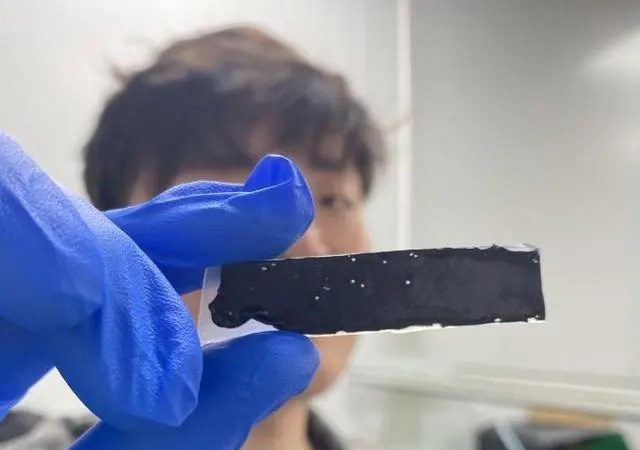This electronic skin (e-skin) has been developed using protein materials derived from natural silk, enhanced with calcium ions, hydrogen ions, and two-dimensional nanomaterials, which endow the e-skin with all the physical and chemical properties akin to real human skin.

Soft gel electronic skin resembling an adhesive bandage. (Photo: China News)
Chinese researchers have developed a new type of electronic skin (e-skin) that enables robots to perceive their surroundings through touch in the dark when vision is limited.
The soft gel electronic skin is shaped like an adhesive bandage and mimics human skin properties, including elasticity and self-healing capabilities.
The e-skin can also detect changes in temperature and pressure, significantly enhancing the utility of robots.
A significant challenge in developing electronic skin has been the lack of suitable synthesized materials that replicate the physical, chemical, and sensory characteristics of human skin.
A research team from Southeast University in China has found a solution by creating this new e-skin based on natural silk protein materials.
The scientists also incorporated calcium ions that absorb moisture, weakly acidic hydrogen ions, and two-dimensional nanomaterials responsive to environmental stimuli to create the e-skin.
Team member Duan Shengshun noted that this e-skin possesses all the physical and chemical properties similar to real skin, such as elasticity, self-healing ability, antibacterial properties, and weak acidity, while also being capable of sensing surrounding temperature, pressure, and humidity once activated. Consequently, electronic skin can heal simply by applying a new patch over a wound.
These findings were published in the scientific journal ACS Nano.


















































